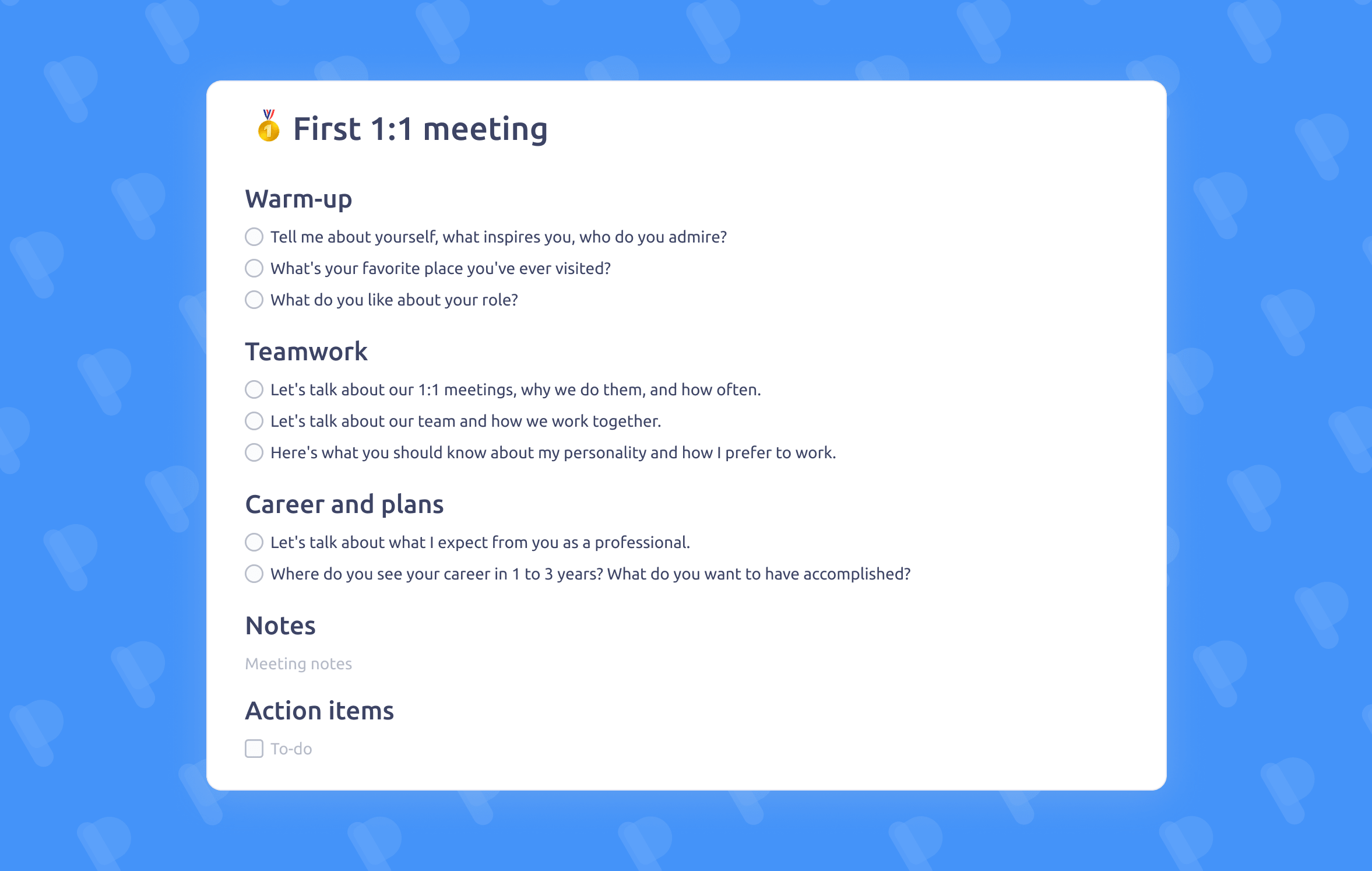This blog is the second part of RingCentral’s Make Meetings Matter series. We offer up advice on how to make all meetings purposeful, engaging and effective.
People management can be tough, and with managers increasingly having to oversee their direct reports and give guidance from afar, keeping them on track can be challenging. One great way to build better relationships with your team members, inspire great work, keep track of action items and improve morale is the humble one-on-one meeting.
However, managers sometimes neglect the one-on-one in favour of seemingly more urgent tasks or catch-ups. But setting and sticking to a schedule of regular face-to-face meetings with individual team members is crucial (whether that’s a video call or in the office as restrictions ease). This is especially true as we continue to navigate the somewhat insular world of remote working.
A guide that covers all you need to know
It’s not all that easy to get started. It can be a time-consuming task in itself, just finding the time to catch up. So when you do eventually find a regular gap in the diary, safe to say you want it to be worthwhile for the both of you.
Ineffective meetings can reportedly cost businesses up to $283 billion a year, so it should be a priority to understand how to make your meetings count. As with most meetings, the efficacy of your one-on-ones will often depend on how well you plan and run your sessions.
That’s why we’ve put together a checklist to help you make the most of your one-to-one meetings. Before we go all in, let’s take a look at the purpose of a one-on-one.
What’s the purpose of one-on-one meetings?
When asked why they arrange one-on-one meetings, managers report several reasons, including:
- To understand and eliminate roadblocks
- Pulse check or check-in (This is important to employee engagement and a good way to build trust)
- Status update (How are specific projects coming along?)
- Career development/performance management (help their direct reports with goal setting and achieving career goals)
The employee’s perspective covers a lot of the same ground:
- Establishing development goals
- Asking for constructive feedback and manage up
- Understanding someone’s management style and get a feel for how they like to work
- Professional development, goal setting and performance reviews
Image source
Now that we have an understanding of why effective one-on-one meetings should be top of your list, here’s how to make the most of it. Both for yourself and your direct reports.
Before your meeting
Set a meeting agenda
It’s important to have an outcome in mind ahead of your meetings. It could be a task you want to delegate, or you simply want to build a better bond with your team members. Regardless of the purpose, a set structure or template and agenda items for your meetings is the key to keeping your meetings on track.
We have five free meeting agenda templates that you can use for your next meeting. You can make any of these a shared agenda template. Some of these meeting templates allow for finer details like talking points.

Ask the right meeting questions
Making the most of your one-to-one meetings means advocating a culture of openness and honesty. For some, coming clean about their challenges in or outside of the workplace is difficult, and you may often find some of your team members tell you what you want to hear. Preparing and circulating open-ended questions such as ‘what challenges have you faced this week?’ or ‘what would you like to discuss in our one-to-one session?’ That way, your team members can raise any key concerns ahead of the catch-up, and you can prepare accordingly.
Prepare feedback
Giving constructive feedback is arguably one of the trickiest aspects of a managerial role. While feedback is best delivered as soon as possible, one-to-one meetings provide an appropriately private environment for delivering tips or guidance that you may not want to give in a busy office environment.
Set expectations
Your employees must know what excellence looks like in their role and how they can progress. Setting expectations around day-to-day responsibilities and the content of your one-on-one meetings is important. For example, do you want your direct reports to take the lead in the meeting? Follow up with actions? Do they need to prepare for every one-to-one? If so, what and why? First, it’s a good idea to lay the ground rules for your one-on-one sessions and set your team up for success.
Run a tech check
As hybrid or remote working becomes commonplace, it’s your responsibility as a manager to ensure your remote team has all they need to migrate physical, in-person meetings to the virtual equivalent. Your employees need access to connectivity with ample bandwidth for video communications, a microphone and ideally, a headset that helps to alleviate background disruption. Without the right technology in place, trying to conduct virtual meetings could be a hindrance to productivity. It’s important to address the needs of your team in terms of easy-to-use, robust cloud communications technology that unifies messaging, video, and phone capabilities to help you collaborate more efficiently and drive better more authentic working relationships.
During the meeting
Start by checking-in
It’s a good idea to start with a simple check-in. Immediately building an open environment will encourage honesty, allow you to identify any challenges within your team regarding morale, and address any personal issues your team members might be facing in the context of work. Simply checking in with your team can help you build trust and a human connection that lays a foundation of respect for your team.
Keep it brief
As 67% of employees say spending too much time in meetings distracts them from doing their job, it’s important to keep meeting content concise, have clear objectives in mind, and ensure they are always necessary and productive. Unless you have something meaty to discuss, it’s a good idea to keep one-to-one meetings short. Around half an hour or less can help keep you both focused and stay on topic.
Be present
Be sure to give your one-on-one meetings your full attention. Every member of your team wants to feel valued and heard, especially when loneliness and burnout are rife. It’s worth considering putting your phone on flight mode and turning off inbox notifications to keep yourself present and practice active listening.
Take notes
Another way to stay focused during the meeting is through efficient note-taking. While it’s important to encourage your team members to problem solve and come up with solutions to their challenges, it’s also vital to record your thoughts as a manager. This helps you refer back and track the personal development of your direct reports over time.
Image source
After the meeting
Follow up
Whether you follow up or delegate to your team members, consolidating your notes with a summary and action points from your meeting can help to ensure each participant honours the actions discussed in your meetings.
Stick to your schedule
Your one-to-one meetings need to have a consistent presence in your diary, and you and your direct reports must prioritise them. This could be weekly meetings, bi-weekly. Whatever works best for you.
Letting these meetings slip off the radar could have a detrimental impact on your team. That’s why you should consider a recurring meeting. Even if it ends up changing, it’s in there as a reminder. Open communication is necessary to build a healthy working relationship and is important in driving a sense of value and purpose within your team.
Planning, preparing and managing your one-on-one sessions wisely can have a huge impact on morale and productivity. Identifying their strengths and talents to conduct better collaborations can free up time for you to do a better job as a manager.
Using one-on-one meetings means you benefit from identifying what team members are best at and what they enjoy. This helps them feel more engaged and improves your chances of retaining talent for the long term.
Originally published Aug 17, 2021



